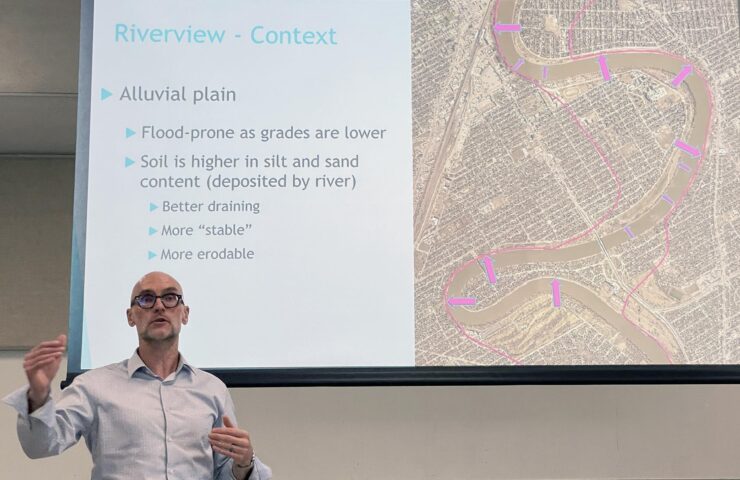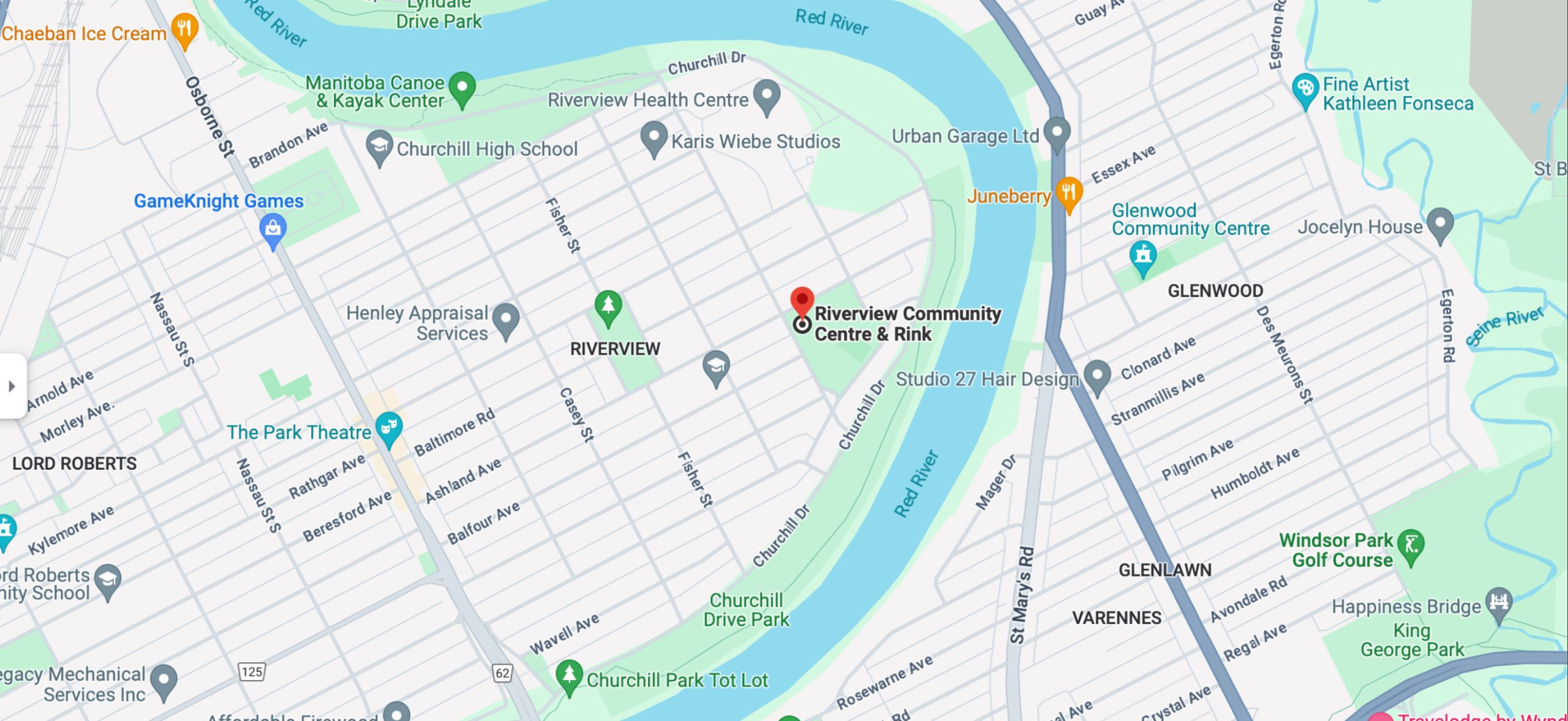Planting and protecting trees and other natural vegetation are important steps towards maintaining healthy riverbanks in our community. And while we’re losing trees along the Red River there are also positive steps being taken to enhance these riparian areas. That’s the main message from a community information meeting sponsored by Trees Riverview on May 22.
The desire to learn more about riverbanks and how to help them flourish was top of mind after numerous trees were cut down along the river in our neighbourhood this winter and spring.
Kendall Thiessen, Riverbank Management Engineer for the City of Winnipeg, told the audience of approximately 25 that rivers are living systems that naturally meander and find new paths. But because Winnipeg has developed along the Red River, it requires more control measures to keep the river in place. “We never gave the river the room to do its thing,” he explained.
Most erosion happens on the outside edge of a river where water flows with greater velocity. Riverview, which sits on the inside edge of the Red River, sees some erosion but is relatively stable and unlikely to experience major collapses. Riverview also has more silt and sand in our soils from historic river deposition. Thiessen confirmed that trees provide valuable reinforcement for riverbanks, strengthening the soil and helping to hold up the riverbank.
Cameron Ruml, Wildlife and Habitat Stewardship Biologist with Naturalist Services Branch for the City, noted that historically Winnipeg was a grasslands area, with some trees found in riparian areas along the rivers. Even Assiniboine Forest was mostly grassland before 1940.
While Winnipeg may actually have more trees now than 100 years ago, there are many threats to those trees we now treasure. For example, Dutch Elm Disease and Emerald Ash Borer are causing great damage. And while the spread of those diseases continues to be managed, and has been slower than expected, Ruml said the Emerald Ash Borer will eventually kill all ash trees.
But even dead trees can play an important role in riverbank health. Nearly 40 species of birds use standing dead trees for nesting, according to Ruml. “A healthy forest has dead trees in them,” said Ruml.
Glen Manning, a principal and landscape architect with HTFC Planning & Design, told the audience that our City, and those who live here, have become much more attuned to “the natural drive we have to connect with nature.” He said it’s only been since the mid- to late-1970s that governments really began to see a social function to rivers, rather than simply exploiting their industrial uses. Increasingly, riverbank areas are being restored, with ecological and social functions considered in designs. An example is the holistic restoration along Lyndale Drive in Norwood Flats, directly across the river from Riverview.
Furthermore, the City has recently increased funding for riverbank stabilization, with a commitment to increasing river access where possible.
And there’s more commitment, and dollars, for tree planting. The Naturalist Services Branch, for example, is trying to plant 10,000 seedlings each year, including along the Churchill Parkway (with support from community members and students at College Churchill High School). The City could potentially support new planting projects along the riverbank itself, but it’s not their main concern, as riverbanks naturally regenerate themselves. “Our goal over time is to widen the riparian zone,” Ruml said, while adding they don’t intend to take over the soccer and rugby fields on the Churchill Parkway.
Ruml had a simple message for community members wanting to support healthy riverbanks: “Help us plant trees,” adding that planting trees on private property is important too. Ruml also encouraged community members to clean up litter on the riverbank. “Every little bit helps.”
– By Carol Thiessen Trees Riverview
carolthiessen10@gmail.com

























